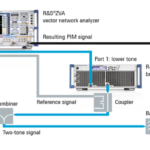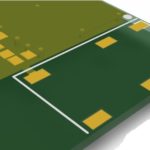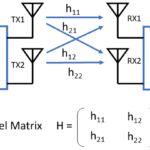The Atta antenna from Antenova covers the 410 MHz and 450 MHz LTE bands, which add low data, long range applications to wireless IoT.
 Low-frequency LTE in the 410 MHz and 450 MHz region provides long range at low power for IoT devices that don’t need to send tons of data. While you can design your own antenna with wires or PCB traces, you can simply add the Atta SRFI079 antenna from Antenova. It operates from 410 MHz to 470 MHz. The figure shows how LTE bands 87, 88, 31, 72, and 73 cover those ranges.
Low-frequency LTE in the 410 MHz and 450 MHz region provides long range at low power for IoT devices that don’t need to send tons of data. While you can design your own antenna with wires or PCB traces, you can simply add the Atta SRFI079 antenna from Antenova. It operates from 410 MHz to 470 MHz. The figure shows how LTE bands 87, 88, 31, 72, and 73 cover those ranges.
Measuring 101 mm × 20 mm, the Atta antenna attaches to a board with and adhesive surface and connects to your circuit through its I-PEX MHF1 connector and a 150-mm wire (other lengths available). There’s only one connection so you won’t need to bring signal ground to the antenna. Thus, you don’t necessarily need a host PCB ground plane.
The table provides RF characteristics.
| 410 MHz – 432 MHz | 432 MHz – 434 MHz | 434 MHz – 470 MHz | |
| Peak Gain | -2.8 dBi | -1.7 dBi | -1.1 dBi |
| Avg gain (linear) | -1.7 dBi | -2.3 dBi | -3.2 dBi |
| Avg efficiency | >60% | >55% | >45% |
| Max return loss | -9 dB | -9 dB | -6 dB |
| Max VSWR | 2.2:1 | 2.2:1 | 3.0:1 |







